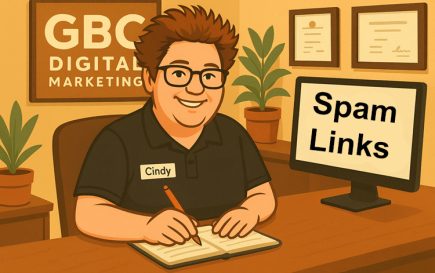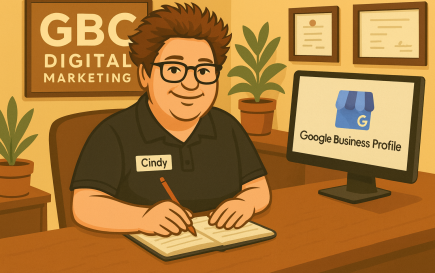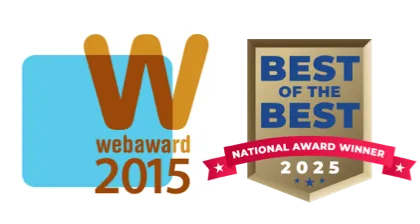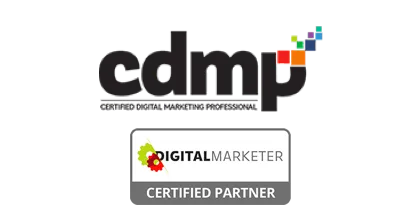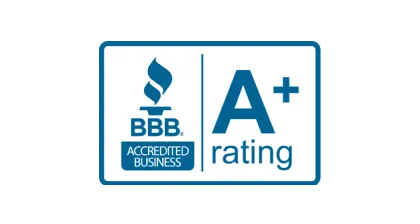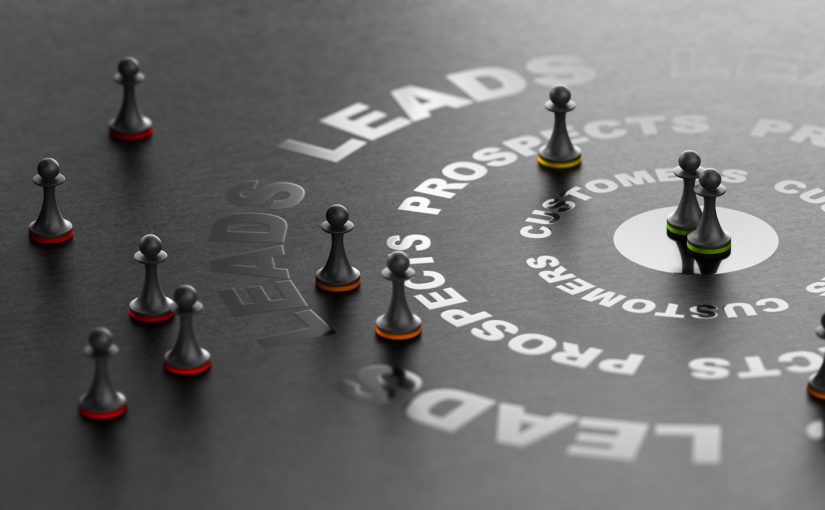
Lead Generation
All You Need To Know About Lead Generation (101) 
There is a lot to know about lead generation, but basically, it is a marketing process of invigorating and capturing interest in a specific product or service, and subsequently leveraging the same to develop sales pipeline. Digital channels are crucial to lead generation, and the techniques of applying these channels have evolved over years – we now have modern online and social techniques. Notable among the new developments is the emergence of the “self-directed buyer,” which thrives on the level of information present online. Likewise, these new techniques helps in the creation and evaluation of potential leads before converting them into sales.
Lead Generation Is Important And Here Is Why
The new face of the buying process demands that marketers devise fresh means of getting their messages to the potential buyers. Before now email blasts and mass adverts have been the acceptable means, but marketers now need to do more to stay on the radar and increase their chances of being found by customers. And after being discovered, they need to forge working relationships with the buyers.
Information Abundance and Attention Economics
The advent of the internet has made information more abundance. While having so much information is great, there is a challenge that comes with it. The abundance of information leads to scarcity of attention: a basic principle of attention economics. According to Hebert Simon, a social scientist and the pioneer attention economist, information in the economic sense obviously consume the attention of its recipients. And this has changed the face of the buying process. We now have so much information getting through to the buyers, and in the bid to avoid being influenced, these buyers have continued to reject or ignore most of these messages. Instead, they rely on personal research to know more about any topic of interest.
The New Buying Process
Lead generation, in the old world of information scarcity, involves marketing, i.e. discovering the names of possible buyers and converting this information into sales. Then, buyers relied on their engagement with the sales agents to help them decide, and the sales agent on the other hand may lack the knowledge required to convince the uneducated early stage buyers.
Conversely, the new buying process entails buyers doing personal research on the internet in search for educational resources that can help them make the right decisions. While at it, they rely on search engines, social media, and other online channels to get more information about a particular product or service. So, they are even well-equipped before going on to engage the sales person.
This is why business must ensure that they have a strong digital presence. The new buying process puts vendors at the tail end of the buyers’ buying journey, because they had already gotten the information that would have brought them in contact with the seller earlier. So, they are more of experts on their own.
Every business that has a solid lead generation strategy stands better chances of earning the trust of potential buyers, and capturing their interest before they reach the stage of meeting the vendor. It also saves the sales team the stress and time-wastage due to cold calling. The process is easier when you have leads for sales, and you ultimately get higher and faster conversion of these leads into revenue.
Owned Attention and Rented Attention
The buying process is currently experiencing a shift from “rented attention” to “owned attention,” all thanks to attention scarcity. The common practice before now is to applying a marketing strategy that thrives on rented attention, i.e. the attention built by other people. For instance, buying an ad in a magazine or renting a space in a tradeshow booth. However, these are less effective in the current dispensation, due to the information overload. So, you need more to gain the attention of buyers – perhaps a blend of owned attention and rented attention – to get results from your lead generation efforts.
Moving forward, the only way to build your own attention is to establish yourself as a trusted advisor to your potential buyers. You can do this through constant creation and dissemination of valuable content assets and thought leadership. If done properly, this will increase your chances of having a successful lead generation outing in the rather complex buying environment we have found ourselves.
Leading Down the Funnel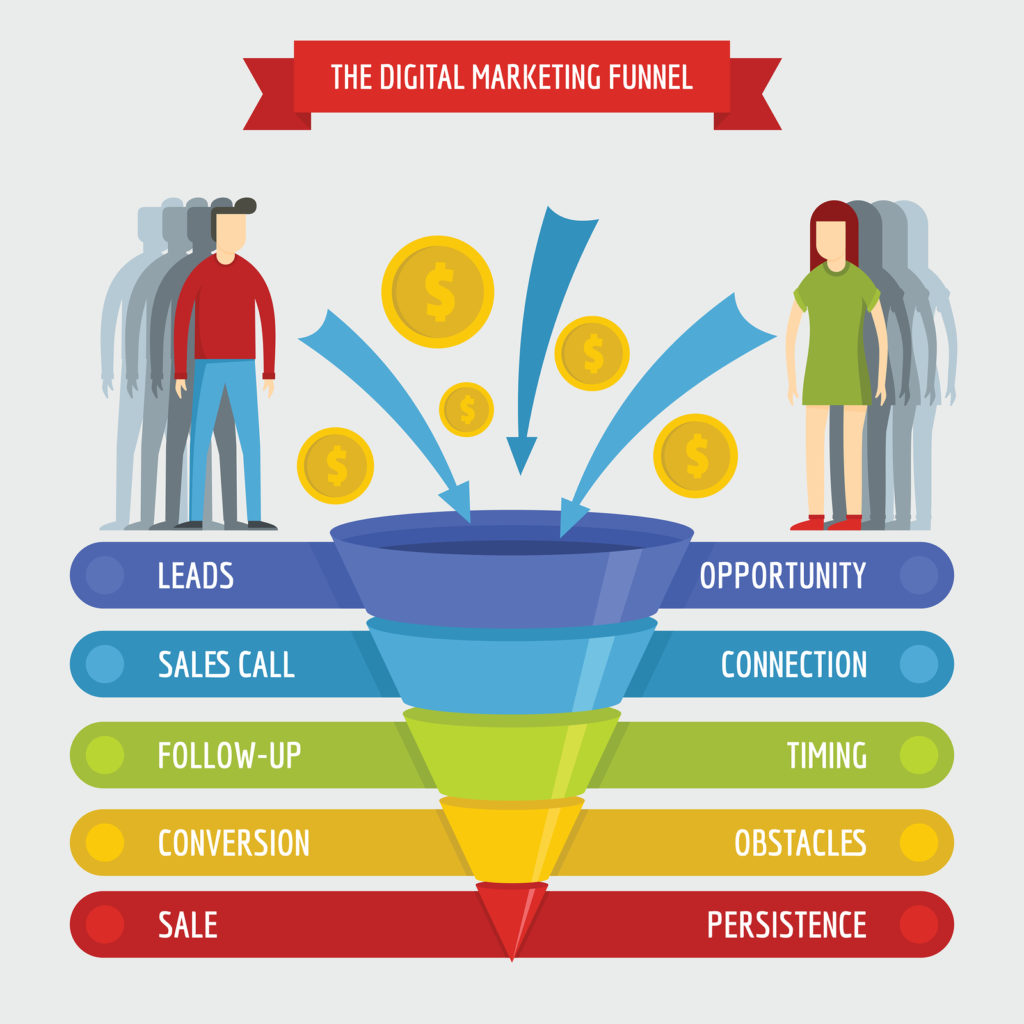
It is essential to understand the fact that the current buying process demands that you do more than converting a new lead into sales. As a business, you must go further than the Top of the Funnel (TOFU) marketing. If you consider the fact that not all new leads will buy at that moment, you will understand that there is the need to find a means of retaining your leads, so that they do not get lost, ignored, or snapped up by competitors.
A business willing to do this must be ready to invest in lead nurturing, alongside other Middle of the Funnel (MOFU) approaches. What these techniques do is to nurture the relationships created and foster the trust through useful engagements in the form of contents, until the lead is ready to make a purchase.
So, thriving in lead generation in recent times depends on how well you are able to combine the TOFU and MOFU approaches into a holistic marketing. It is only then that you can efficiently convert leads into sales.
Lead Generation Research
Lead generation tactics is an important aspect of lead generation, and companies now spend more on devising creative means of capturing the attention of the customers, in the midst of the noise.
Lead Generation Budget Trends
Over time, a rise in the budget and spending of marketers on lead generation has been observed. These funds are usually aimed at website optimization, SEO, and social media.
CMO Lead Generation Priorities
According to MarketingSherpa, CMOs and senior level marketing executives now prioritizes getting or increasing measurable ROI and optimization of the sales and marketing funnel over other strategic priorities for lead generation. Hence, CMOs are on the lookout for viable methods of raising the quality of leads coming in from their marketing programs.
Biggest Lead Generation Challenges
In addition to being among the top priorities for lead generation for marketing executives, lead quality is also a significant challenge the marketers are currently contending with. IDG recently conducted a study on marketers, and the results revealed that 61% of marketers find the generation of high quality leads for their organization very challenging.
Furthermore, inadequate resources – as in staffing and budgeting, absence of quality data or ample time to drive campaigns – has been the biggest barrier marketing executives are facing in their quest to generate quality leads for their companies.
Most Effective Lead Generation Tactics
Another survey by the IDG – the B2B Lead Generation Marketing Trends Survey – reveals that the corporate website of a brand, email marketing, conferences, and tradeshows are the current lead generation tactics that are most effective. Conversely, print advertising and direct mail are the least effective.
Fundamentals of Lead Generation
The definition of a lead is subjective – it depends on the company involved. For most companies, the definition depends on their sales cycle. However, the more generally acceptable definition of a lead is a qualified potential buyer offering considerable interest in buying a service or product from you. Note that every lead that fills out a form gets something in return – perhaps a convincing offer or some important content.
There are two classes of lead generation – outbound and inbound. However, the basic tenet remains recognizing your nurture and customer retention marketing approaches as a part of a comprehensive strategy.
Inbound Marketing
Inbound marketing entails assisting potential clients to locate your company, mostly prior to considering buying, and convert this early contact into a preference for your brand, and eventually into leads and revenue. The current market confers so much power on the buyer. Thus, it is not enough to rely on cold calling, advertisements, trade shows, and other outbound techniques to secure leads. Today’s buyers have educated themselves sufficiently, and they expect more as regards information. Hence, as a marketer, you must make yourself seen through the crowd and heard through the noise by devising innovative means of capturing the attention of the buyer. And this necessitates a good understanding of inbound marketing because it highlights your lead generation impact.
As a marketer, you can do this by doing more in providing a blend of relevant, informative, and entertaining contents that forms a significant relationship with your potential clients, who also doubles as your audience. Creating contents is not enough, you must get them across to your audience using the right channels – the channels your potential buyers are familiar with and spends time on.
Some of the popular inbound lead generation tactics are discussed below:
Content and SEO
You cannot go far with your inbound marketing efforts without the right content, thus content marketing is crucial to any inbound marketing campaign. Content marketing can be described as a marketing technique that entails the creation and dissemination of significant and useful content in the bid to capture the attention of and engage a well-defined and known target audience, to ultimately facilitate profitable customer action. Social, email, and other marketing campaigns all thrives on contents. And the right contents can get you right in front of your buyer, and eventually gain their trust.
Search engines only recognizes contents with top quality alongside a well-optimized website. Thus, it is essential to craft valuable contents. You can organize a content audit to understand how your assets are distributed between the promotional or thought leadership categories. So, you must ensure that your thought leadership content is compelling and substantial. It’s not sufficient to just do it – you must do it correctly. Prioritize quality over quantity and ensure that your outputs are useful, and not necessarily promotional.
You can promote your well-crafted and valuable visual and non-visual contents on social channels. When your engagements continue to rise, Google tends to rate your contents high and subsequently boost your SEO rankings. Natural links tend to be ranked higher on search engines, thus, you must provide informative contents that will get people linked to it naturally.
Website
You need a suitable location to conclude the conversion process of your audience, and there is no better place than a well-optimized website. Events like convincing prospective clients to sign up for your newsletter or fill out a form in exchange for a demo can be hosted on your website, thus helping you to convert visitors into leads. It is important to get some crucial details of your website right, including the contents, design, layout, forms, and Calls-to-Action (CTA).
Blog
This is a place where you can foster trust with your potential buyers. Your blog can be accessed from various channels on the internet, thus ensure that it is search-engine optimized. Note that not everyone reading your blog would be ready to immediately sign up for a demo, hence make the Calls-to-Action clear about asking the visitor to subscribe to the blog or follow you on your social media channels. You can capture the interest of your readers by putting up relevant contents that makes them come back for more. With time, regular visitors to your blog will start exploring other parts of your website. Thus, your blog is a reliable conversion channel.
Social Media
Social media has become more popular in recent times, as a result of an explosion in information. Buyers now rely on social networks to know more about products and services, especially through peers and influencers. While the social media can be leveraged to improve branding and relevance, it is more important in lead generation. So, you can position yourself on all social media channels, including Google+, LinkedIn, Twitter, and Facebook such that your customers find you easily and you can subsequently create that trust with them.
Outbound Marketing
Although the emphasis tends to be on inbound marketing at the moment. However, a holistic marketing approach should be a blend of both outbound and inbound marketing strategies. While you get extensive lead generation activities with inbound marketing, you need the outbound marketing options to further intensify your inbound efforts, and streamline your targets.
Inbound marketing entails the use of outbound channels to get your message and contents across to your potential buyers or audience. It is usually through rented attention, instead of disseminating this information via your own attention channels.
With outbound techniques, you can make your audience think about you even without meeting you yet. This is made possible by the various outbound methods, which tend to wow your audience and subsequently make your company appear outstanding to your audience. These communications are highly streamlined, and it comes with a highly compelling call-to-action. Hence, the right outbound marketing is capable of pushing a lead through the funnel faster, provided they are about making a purchase. You cannot rely on inbound marketing alone to compel leads to make a purchase, but with the extra urge offered by outbound options, the lead is easily driven down the funnel.
A perfect blend of inbound and outbound marketing will skyrocket your number of views and shares generated, while increasing the number of potential buyers accessing your contents and messages.
Email Marketing
Another crucial aspect of a marketing campaign is email. It is the most-used lead generation tactics by marketers, considering its ability to grab the attention of prospects. Thus, you should be ready to make email one of your vital means of communicating with your target audience. It takes your contents and messages directly to your prospects, and even those who are not looking for you.
Display Ads
What stands display ads out is the possibility of having it streamlined and directed to specific demographic or behavioral actions. You can choose your most preferred location to direct the ads to, perhaps an online publication you are sure your prospects spend time on. Likewise, you can take advantage of the re-targeter ads that tracks the user pattern of leads visiting your website. Using re-targeter ads, your visitor can be cookied, and they will get your ads on other websites they visit after yours. If done properly, you can rely on display ads to drive leads, educate potential leads, and convey your message to your targeted audience. The role of display ads is observed at every stage in the funnel. It comes handy in building brand and audience at top of funnel, and helps in the education and evaluation of leads at the Mid-Funnel. Lastly, it improves conversion at Bottom-Funnel.
Pay-per-Click Ads
Pay-per-Click (PPC) ads are such that you are charged for each click on your ad, which is usually accessible via search engine results on search engines like Bing, Yahoo, and Google, or even on a website. In the cases of search engines, PPC allows your ads to be displayed as sponsored results, usually on the top side of the organic search terms. So, if you are looking to grab the attention of your prospects to your newest content or services, or generate leads of high quality, you can rely on PPC ads. Integrate relevant keyword phrases, based on your target markets, into your ads, and it will come up every time a keyword search matches any of the chosen keyword.
Content Syndication
It is not every time that prospective buyers will check your website while on their purchase journey. Thus, it is always essential to be present at every possible places they may end up, and content syndication helps you to achieve this. This content sharing strategy allows you to get across valuable contents to the right prospects. Such contents can be in the form of news releases, articles, and whitepapers among others, and appears on third-party sites and platforms. And you can rest assured of increase in leads, considering that content syndicators directly to your inbox.
Sales Development Representatives
Also known as Sales or Lead Qualification representatives, Sales Development Reps (SDR) works by conducting the reviews, contact, and qualification of leads generated through marketing, and subsequently getting them across to the Sales Account Executives. They are the middlemen between marketing and sales. This transition is necessary to ensure that only qualified lead marketing gets to the sales team. So, the SDRs ensure that the leads are well educated by offering them valuable contents and creating a great impression, while creating a future demand and gaining the trust of the leads as a reliable advisor. If you skip this from the lead generation process, you will end up with leads with blank leads waiting to be questioned, qualified, and converted.
Middle of the Funnel (MOFU)
Due to too much information, buyers tend to ignore your messages in some instances. However, you must keep pushing until you are noticed, and one way of doing this is to develop a strong relationship with these prospects. Rather than pressuring buyers who are not ready to buy into buying, you can leverage a reliable lead nurturing strategy to get them interested in your brand, without necessarily stopping them from educating themselves on their own. Your MOFU can be improved significantly by lead nurturing – you keep your prospects engaged with valuable conversations after capturing their attention via your lead generation efforts.
If you get your lead nurturing right, you can conveniently improve your conversion rate, get more revenue, and ultimately reduce the longevity of the sales cycle. All you need to do is to find the right buyers at the right time. You bring buyers into the funnel via your lead generation efforts, while lead nurturing and scoring drives them toward sales, leaving your sales team to close the deal when the timing is perfect.
Lead Scoring
This is a shared sales and marketing technique that comes handy in ranking leads to establish their readiness to make a purchase. The level of interest shown in your business, their present stage in the buying cycle, and their fit with respect to your business should be the determining factors when scoring leads. If done appropriately, lead scoring can help a company understand if a lead should be subjected to lead nurturing or just fast-track them to sales. It subsequently improves your revenue cycle, while driving more ROI and aligning marketing and sales.
Popular Metrics Used in Lead Generation
You should create measurement strategies in advance, which will guide and assess your marketing technique. While creating these strategies, you should understand what needs to be measured, when, and how you plan to measure it. Below are some of the common lead generation metrics you can choose to measure as a method of evaluating your lead generation efforts:
- SAL to Sales Qualified Lead (SQL), which refers to the conversion from SAL to Sales Qualified Lead
- SQL to Opportunity, which refers to the conversion from SQL to Opportunity
- Quantity of Sales Qualified Leads, which is the number of SQLs transferred to the sales teams
- Quality of SQLs, which is the percentage of SQLs that are accepted by your sales team
- Cost per inquiry, which is the ratio of the lead acquisition cost and the total number of inquiries
- Cost per lead, which is the ratio of the total campaign costs and quantity of leads
- Inquiry to Marketing Qualified Lead (MQL), which refers to the conversion of initial inquiry to Marketing Qualified Lead
- Marketing % of contribution to sales pipeline, which is the percentage of revenue in the sales pipeline (opportunities) gotten from the employed marketing strategy
- Marketing % of contribution to closed revenue, which is the percentage of revenue in closed won deals that coming from the employed marketing strategy
- MQL to Sales Accepted Lead (SAL), which refers to the conversion from MQL to Sales Accepted Lead
Lead Generation Resources
Lead generation resources are available in different forms. For instance, you can consider leveraging a lead generation software to achieve a better sales and marketing alignment, amplified sales pipeline speed, and more qualified leads, all culminating to an overall increase in the level of effectiveness across all aspects of the business.
Conclusively, the right lead generation tools and resources can significantly improve the quality and number of the leads you transfer to your sales team. This indicates that your lead generation efforts are indeed bringing the desired results.
Conclusion
Now that you understand what lead generation is all about, we are confident that you can improve the lead generation strategies of your business and ultimately align it with its set goals and objectives.
Looking for help setting up lead generation campaign?
GBC is an award-winning Digital Marketing Firm and we can help. With so many ways to market your business in the digital world, you need expert guidance to ensure your efforts are optimized. We have been supporting small to mid-sized businesses with Google-certified expertise since 2003, and we know we can help you too. Reach out today to learn more.
